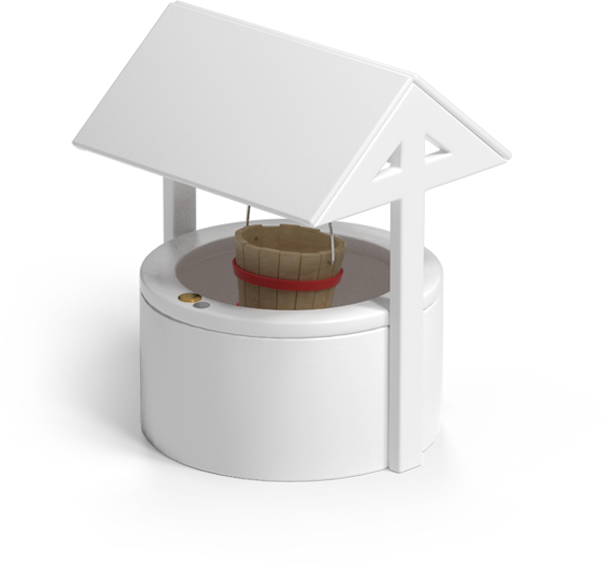What is a sitting tenant?
Much has been made of the Government putting a squeeze on the profits of buy-to-let (BTL) landlords with regulatory changes and tax reforms, and yes the BTL market does appear to be changing, but landlords have always been looking to buy and sell properties. That is what property investment is all about.
By Jon Howe4/27/21

What is a sitting tenant?
Much has been made of the Government putting a squeeze on the profits of buy-to-let (BTL) landlords with regulatory changes and tax reforms, and yes the BTL market does appear to be changing, but landlords have always been looking to buy and sell properties. That is what property investment is all about.
A landlord faces many challenges when buying and selling properties, mainly aligned to the fact that this is a business for them. The principal consideration is that a seller has to make the property as attractive as possible and the buyer has to see the potential in a property, but also try to get the best price possible. Market forces dictate both sides of the transaction, but in terms of the person selling a property, you would always want your property to be vacant when selling it, otherwise you are severely restricting your market, unless you specifically wish to sell to another landlord.
But with more and more people renting properties, tenants on long term agreements are becoming commonplace, and when a property containing existing tenants comes on the market, this changes the situation considerably for both the buyer and the seller.
Understanding what a sitting tenant is
A sitting tenant is also known as a ‘tenant in situ’ and carries a pretty straightforward description. Basically they are a tenant that is resident in a property whilst it is being sold, and therefore retains the right to continue living in the property.
Whilst this is the literal meaning of a sitting tenant, the term has come to mean a tenant of a long-standing nature, because this is where the law changes slightly and complications for the landlord can occur. The law relating to tenancies in the UK changed in January 1989, when assured shorthold tenancies were introduced. Prior to this, tenants had what is called a ‘security of tenure’ under the Rent Act 1977, which effectively meant they retained the right to reside in the property under any circumstances. They were protected tenants.
So any sitting tenants who have held a tenancy since before 1989 still retain this right. But any tenants taking on a tenancy since then do not. This gives the landlord far more freedom to make critical decisions relating to the tenancy if and when they decide to sell the property.
What rights do sitting tenants have?
As we have already discussed, long-term tenants from a pre-1989 tenancy agreement have the security that they can’t be evicted. But in truth, the majority of tenants are on much more recent agreements, so what does a change of landlord mean for them?
Whilst there will be a natural element of uncertainty when a tenant gets wind that their landlord is selling the property, in many cases this won’t lead to any material change. The existing tenancy agreement will merely be passed to the new landlord and a notice served to inform the tenants of the transfer of ownership. It is not unusual for the terms of the tenancy agreement to be tweaked a little, but a “fair rent” must still be charged.
A good landlord will inform his/her tenants that they intend to sell the property, but that they will be unaffected by the change. However, the new owner of the property may have their own plans for it. They may prefer to have a vacant property to live in themselves, they may prefer to install their own tenants, or they may prefer to upgrade and refurbish the property, maybe to make it a house of multiple occupation (HMO) or to upgrade the fixtures and fittings to change the kind of tenant market they wish to enter. This will result in them wanting the property empty whilst work takes place.
In all these scenarios the new owner must serve a Section 21 notice on the tenant to give them a period of time to find new living arrangements; effectively the tenants are being evicted. A Section 21 notice will remain valid for a specified period of time, during which the tenant should leave the property, the notice must have a minimum period of two months between the start and end date, but there is no maximum limit.
Of course it is possible that the previous landlord could go through this process, and serve an eviction notice on their existing tenants in order to market the property as vacant and therefore open it up to a much wider spectrum of potential buyers. However, sitting tenants are becoming increasingly common, due to the fact that their tenancy agreement can pass quite simply between two owners in a cordial agreement, and there is no change to the living arrangements.
How does a sitting tenant impact upon a landlord?
More and more people are renting in the UK, because it is still a challenge for first-time buyers to get on the property ladder. For the same reason, tenancy agreements are becoming longer also, which means there are likely to be more sitting tenants as properties change hands, but the tenants remain in situ.
The main impact of a sitting tenant on the landlord is that it affects how they sell the property, which we will discuss in a later section. But a landlord who takes on an existing sitting tenant has the right to review what is considered to be a “fair rent” on two yearly intervals, or sooner if ‘significant improvements’ have been made to the property which justify an increase in rent. The rent review is carried out by an independent rent officer.
In many cases, however, the tenant will be on an assured shorthold tenancy agreement, which means that the landlord can serve a Section 21 notice and evict the tenant, should they wish to.
Is purchasing a property with a sitting tenant a problem?
In short, it can be a problem, but equally, you might just be able to pick up a bargain. Existing sitting tenants in a property are not something that lenders traditionally like, and hence they are reluctant to finance the purchase of a property if this is the case. Whilst you might immediately think that is a major issue, it also means that the seller has a problem, because marketing a property with a sitting tenant in it severely restricts who they might be able to sell it to. This means that properties with a sitting tenant can be picked up significantly cheaper than a comparable property that is vacant. If you can then make the property vacant, the value of the property will increase back to its market value pretty much immediately.
Purchasing a property with a sitting tenant will leave you facing a couple of different scenarios. Of course you may be happy to keep them on, in which case the purchase is extremely attractive. You then have a readymade tenant and don’t face the prospect of spending money to attract a tenant or having a number of months with no rental income whilst you find a tenant. The other scenario is that you either serve a Section 21 notice to evict the tenant or you sit tight until the tenancy agreement ends, if the existing terms make that a sensible proposition. The tenancy agreement may have six months to run or it might have five years. It is up to you to decide what makes sense in terms of your investment ambitions.
Whichever scenario you seek to pursue, it is worth remembering that you may need to finance the purchase with cash reserves, because a lender is unlikely to offer you a mortgage with a sitting tenant. But the lower purchase price will also most likely reflect this.
Is selling a property with a sitting tenant a problem?
It can become a headache to sell a property with a sitting tenant, but it largely depends on what kind of landlord you are and what kind of relationship you have with your tenants. It is quite easy to ‘clear the decks’ and serve a Section 21 notice to evict the tenants, and therefore create a vacant property which you can put on the market to sell. Equally, if the tenants are good and you have a favourable relationship with them, you should be able to sell to a respective landlord who will be attracted by tenants in situ, instant cash income and a relatively simple transfer of ownership.
As a landlord, if you maintain a good relationship with your tenants, most will be understanding if you give them a good amount of notice of your intentions to sell, even if that means evicting them. It is not unusual for a landlord to sell a property after all, plus most people who rent accept that it is a temporary arrangement, and giving a tenant good notice and keeping them informed throughout the process is all you can reasonably do. Some tenants, however, might be more of a problem if they have less inclination to move or are naturally less accommodating to your ambitions.
In technical terms, there is not much difference in the legal process between selling a property that is vacant, and selling one that has sitting tenants. But what is definitely beyond debate is that a property with sitting tenants is less attractive to the market, and is only really marketable to another landlord, or someone who doesn’t mind the complications and hassle of evicting tenants. As the property owner, you may decide that it is worth waiting until the tenancy agreement ends before selling the property, in this case you must inform the tenant that the agreement won’t be renewed. If you take this course of action, or decide to evict the tenant before marketing the property, you need to remember that it can take up to six months to sell a property, and this will be a period of time where the property will be empty and you will have no rental income. Is that something you can accommodate?
The flipside of this is that selling a property with a sitting tenant helps with your cash flow as a landlord, because you will have steady income all the way until contracts are exchanged, which could be vital in helping you finance another property purchase at the same time.
A final consideration when looking to sell a property with a sitting tenant, is if that tenant has ‘security of tenure’ under the Rent Act 1977, as discussed above. These tenancies are not very attractive in terms of passing them on between owners. In fact many such properties end up being sold at auction, almost always under the market value, because prospective buyers are so few.
What should I do if I have a sitting tenant?
The best thing you can do as a landlord with an existing sitting tenant is to seek professional legal advice about where you stand. Your course of action depends on your investment ambitions, in terms of do you want to sell to another landlord and keep the tenants on, or do you wish to have the property vacant to increase the market value? Either way there is a process you need to go through, and a legal expert can advise you on this.
If you are purchasing a property with a sitting tenant, then the same advice applies in terms of seeking expert legal opinion. If you are keeping the tenants on then you should introduce yourself and explain the process of transferring the tenancy. This will involve serving an S3 notice and an S47/S48 notice, which effectively informs the tenants officially of the transfer of ownership, but that their tenancy agreement continues unchanged. The landlord should also transfer the tenant’s deposit from one protection scheme to a new one. And of course, if it is your intention to evict the tenants you must inform them of this via a Section 21 notice, and give them a fair and reasonable period in which to find a new rental property.
Take a look at our other articles




